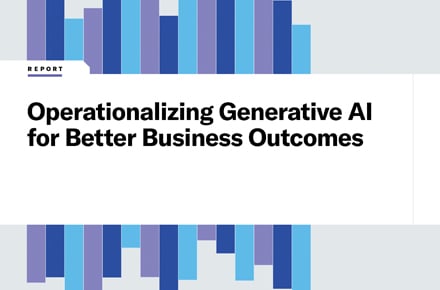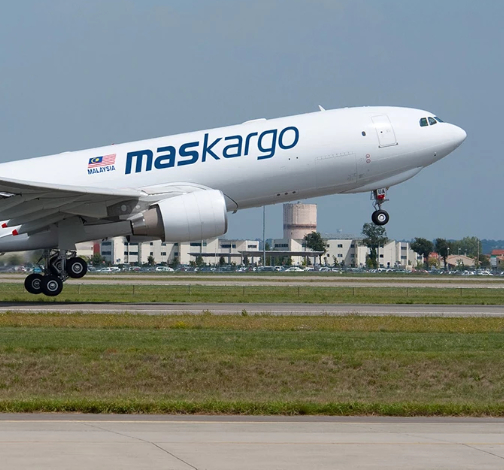How smart freight forwarders are preventing disruptions
maio 1, 2025 / Jeff Smullin
Short on time? Read the key takeaways:
- The logistics industry is evolving from reactive problem-solving to proactive prevention, transforming how successful freight forwarders handle exceptions.
- Reactive exception management creates hidden costs through manual interventions, margin erosion, customer dissatisfaction and inefficiency.
- Predictive exception management requires comprehensive data integration, intelligent route optimization beyond price and proactive disruption alerts.
- Freight forwarders using predictive capabilities can gain competitive advantages through better margins, stronger customer relationships and improved operational efficiency.
In logistics, ship happens. Disruptions are inevitable.
For decades, freight forwarders have built their reputations on responding quickly when things go wrong. But what if the competitive edge isn't about how quickly you solve problems but how effectively you prevent them?
The logistics industry has traditionally emphasized responsive problem-solving, celebrating freight forwarders who skillfully handle unexpected challenges while having less focus on addressing the root causes of recurring disruptions. Meanwhile, leading organizations are recognizing a powerful truth: the greatest improvements often come from preventing problems.
Making the shift from reactive to proactive exception management represents the future of logistics optimization, where predictive intelligence becomes the key competitive differentiator.
The hidden consequences of reactive management
A reactive approach takes a toll on logistics operations and its bottom line. For freight forwarders operating within tight margins and rising customer expectations, reactive approaches incur substantial business implications:
- Time-consuming manual interventions when shipments don't proceed as planned
- Margin erosion from unexpected fees, penalties and expedited shipping costs
- Customer satisfaction dips when delivery timelines aren't met
- Operational inefficiency from constant reprioritization
- Employee burnout from persistent crisis management
These impacts stem from treating exceptions as unpredictable events rather than analyzable patterns. The key to reducing these costs lies in understanding the full complexity of logistics operations and adopting a more sophisticated approach.
Beyond rate shopping: Real-world complexity
Traditionally, logistics optimization has focused primarily on rate shopping and finding the lowest shipping rate. However, experienced freight forwarders understand that effective logistics management requires considering a broader set of variables:
- Cargo specifications and handling requirements
- Compliance considerations for different products and destinations
- Transit timelines and reliability needs
- Customer-specific processes and service-level agreements
This complexity multiplies with multimodal shipments involving air, ocean, rail and truck transportation, each with unique regulations and potential disruption points. Handoffs between modes create critical vulnerabilities where delays often occur.
As supply chains grow increasingly complex, the cognitive demands on planners intensify. Even experienced teams struggle to manually analyze all these factors quickly enough to consistently select optimal routes, defaulting to familiar patterns even when better options exist. This limitation of human processing capacity explains why a more systematic, data-driven approach is needed.
Three key elements to predictive logistics
Until recently, technology limitations made predictive exception management impractical. Today, advances in data processing, AI and visibility tools have changed how logistics teams can approach their work with three essential capabilities:
#1 Comprehensive data integration
Predictive exception management begins by integrating previously siloed data, such as:
- Historical carrier and route performance
- Real-time visibility from tracking systems and sensors
- External factors like weather, port congestion and traffic
- Compliance requirements and service agreements
These factors combined identify compliant, cost-effective routes and resilient against disruptions. Calculating this analysis is too complex for manual methods, but logistics optimization tools can handle the load.
#2 Intelligent route optimization
Moving beyond simple rate shopping, modern optimization considers multiple factors simultaneously:
- Regulatory compliance for specific cargo and destinations
- Transit requirements and delivery deadlines
- Carrier reliability based on historical performance
- Potential disruption points and available alternatives
- Seasonal patterns affecting routes or carriers
This multi-factor approach transforms simple price comparisons into strategic decisions that balance cost, reliability and compliance requirements.
#3 Proactive disruption management
The most advanced solutions actively monitor shipments and alert teams to potential issues before delays occur:
- Identifying when shipments risk missing connections
- Notifying teams when external events threaten planned routes
- Suggesting alternatives when disruptions are likely
- Learning from historical patterns to improve future predictions
This approach elevates logistics teams from reactive responders into proactive managers who address issues before they become problems.
The competitive advantage
Organizations implementing predictive capabilities can gain significant advantages in a competitive marketplace:
- Improved margins: Preventing disruptions eliminates costs for expedited shipping, storage fees and late penalties. Better visibility into seasonal trends allows more accurate pricing and stronger negotiating positions.
- Enhanced customer satisfaction: Consistently meeting delivery deadlines builds your reputation in a market where reliability commands premium pricing. Proactive communication about potential issues further strengthens client relationships.
- Operational efficiency: Teams spending less time firefighting can focus on strategic initiatives, improving job satisfaction and reducing burnout. This efficiency allows for handling more shipments without adding resources.
Charting the course from reactive to predictive logistics
Shifting from reactive firefighting to predictive management isn't something that happens overnight. The logistics teams seeing real results are tackling this change step by step: looking at where their processes break down, connecting data that's been sitting in silos, bringing in technology that helps predict issues, and perhaps most importantly, changing how they measure success.
Want to take the next step in your predictive logistics journey? Download our free guide to dig deeper into how you can embrace predictive exception management and drive measurable improvements in both efficiency and profitability.



















